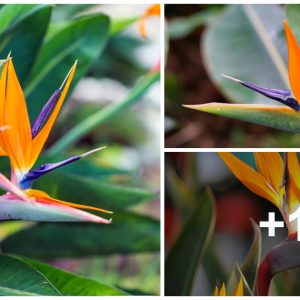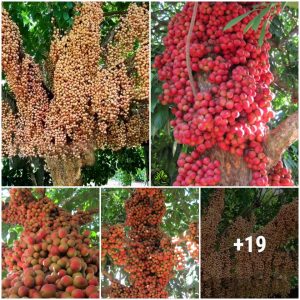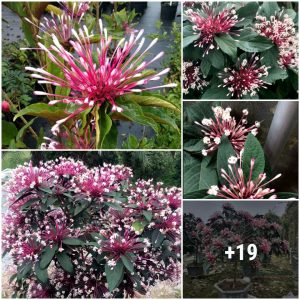The nearly 1,000-year-old ginkgo tree turns bright yellow leaves in autumn, looking like a golden globe when viewed from above, attracting thousands of tourists to enjoy the scenery.
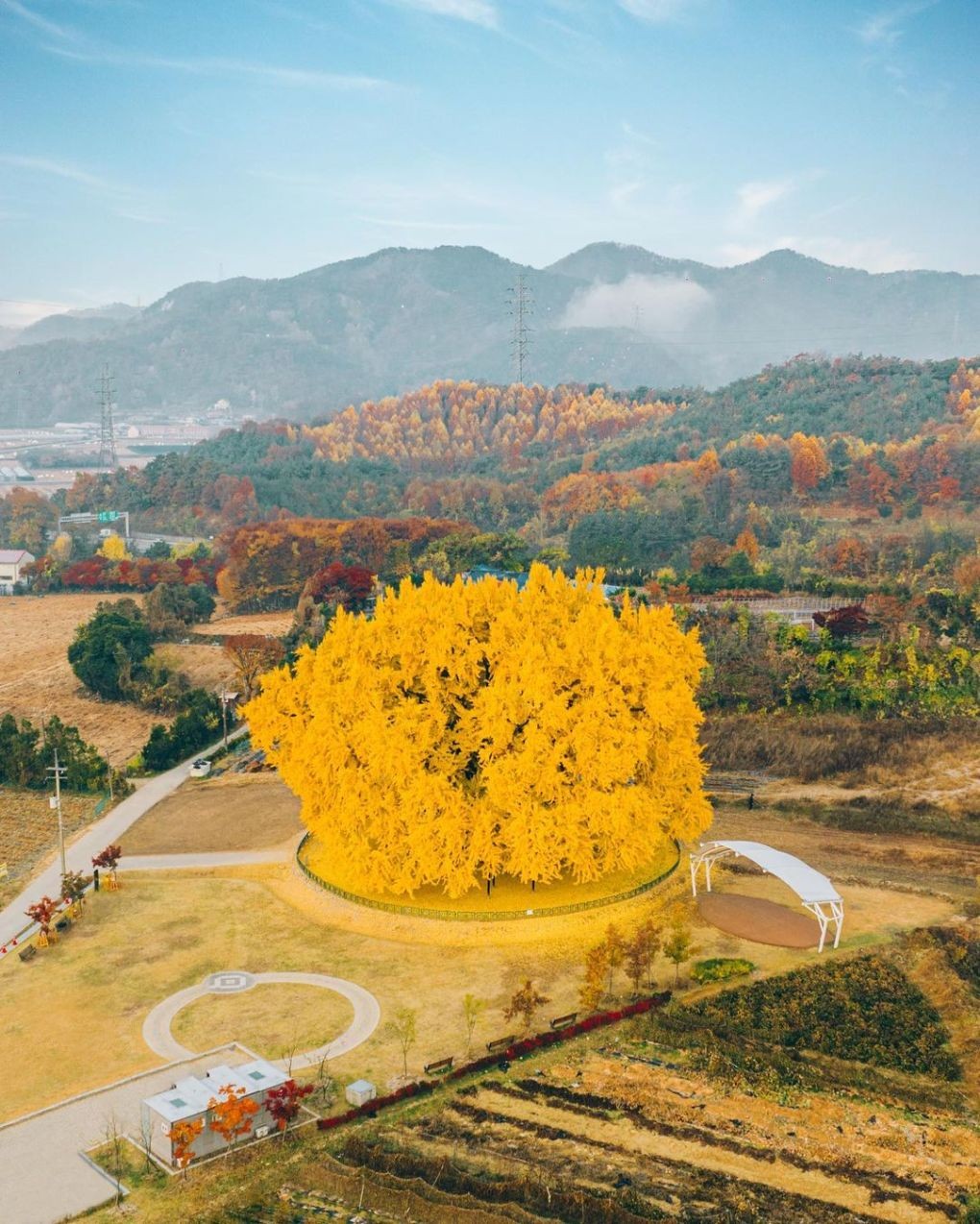 |
| The giant ginkgo tree in Wonju City, Gangwon Province is one of the most famous scenic spots in Korea every autumn. With an estimated 800-1,000 years old, it is likened to a living fossil of the land of kimchi. Seen from above, the tree stands out in front of the maple leaf forest behind, like a brilliant golden ball. (Source: Instagram im0gil) |
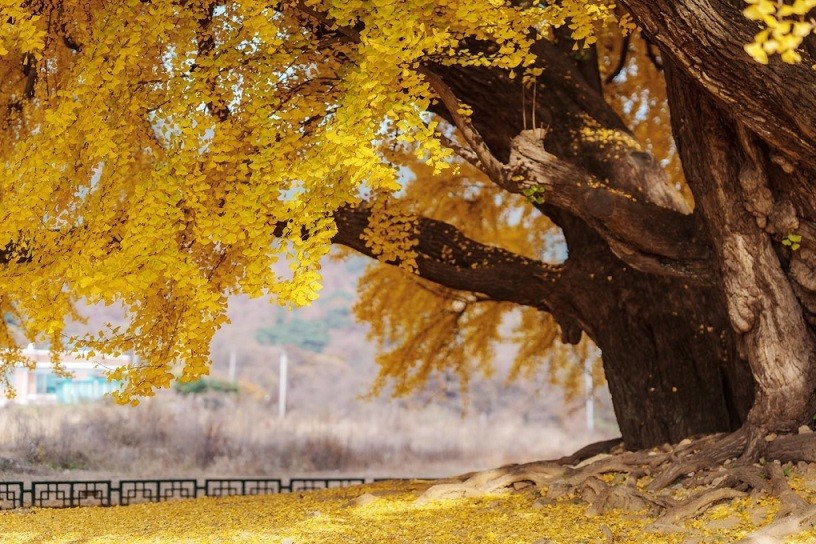 |
| The tree is about 34.5 meters high, the canopy is about 14.5 meters wide. The origin of this ginkgo tree is associated with many oral stories told by local people. Some say, it grew from a monk’s stick, others say it is inhabited by a white snake and say that people should not touch the tree because it will wake the snake. (Source: Instagram misty_view) |
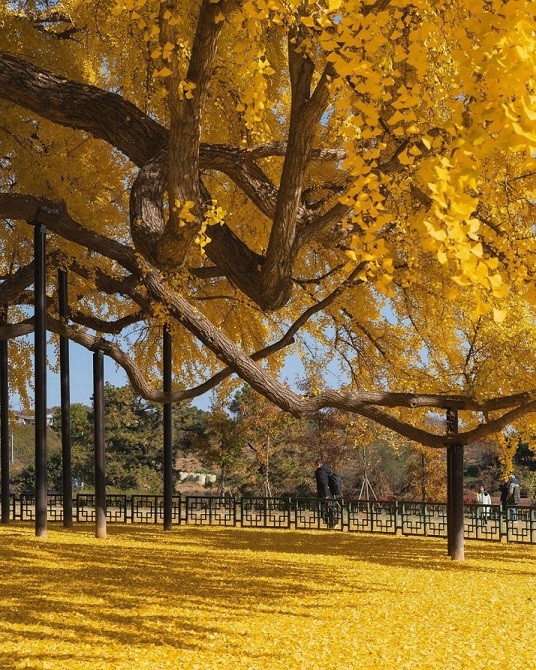 |
| The large, long branches swooping down to the ground are supported by many pillars. When the leaves fall, people do not clean them up, but leave them as a beautiful golden carpet. There is a fence around the tree, visitors are not allowed to enter. (Source: Instagram hong____pic) |
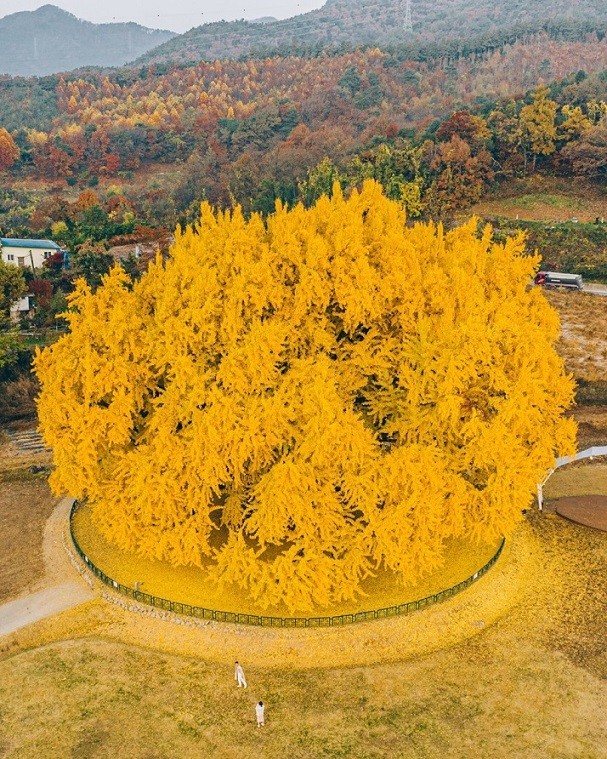 |
| The tree is located near the rice fields. The villagers believe that if every year the leaves turn golden at the same time, they will surely have a bountiful harvest. (Source: Instagram im0gil) |
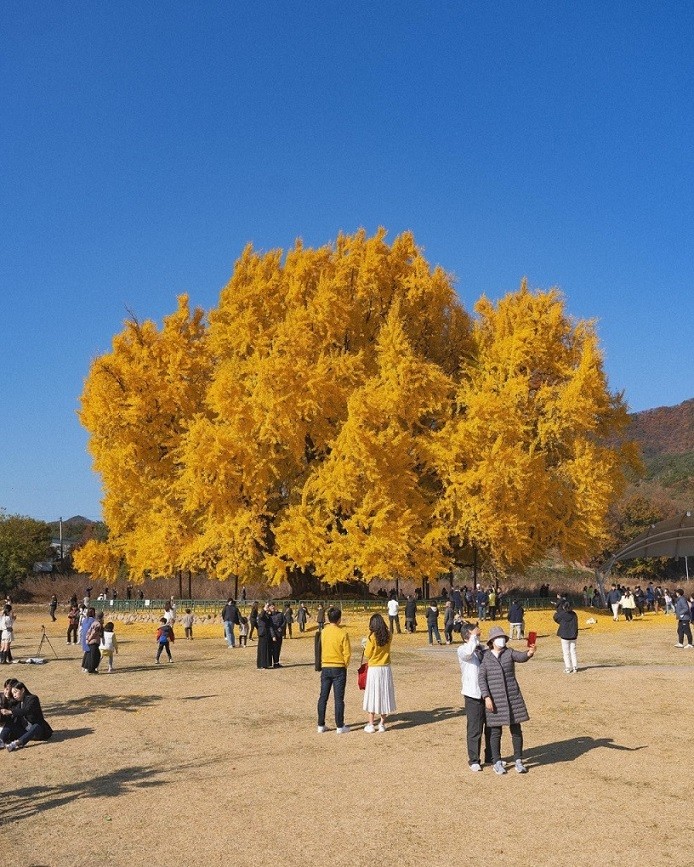 |
| Every year, from mid-October to early November, crowds of tourists come from all over the world to admire the scenery and take pictures. The location of the tree is about 130km east of Seoul, making it very convenient to travel by private and public transport. (Source: Instagram hong____pic) |
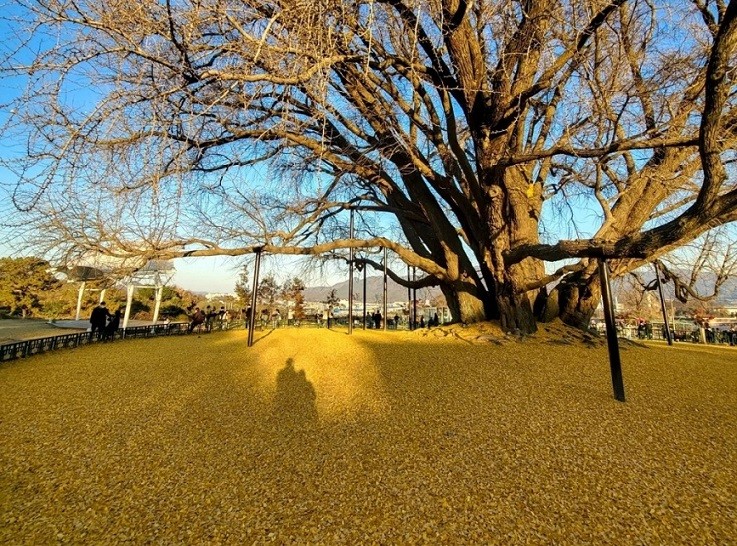 |
| The yellow color of the leaves is usually kept until the beginning of December. However, most of the leaves have fallen due to strong winds from last week, but the “yellow carpet” is still there, many tourists take advantage to check in. Villagers also consider it a sacred tree. They have cared for, protected and revered it for centuries. In 1964, the tree was designated as a Natural Monument in Korea. |


